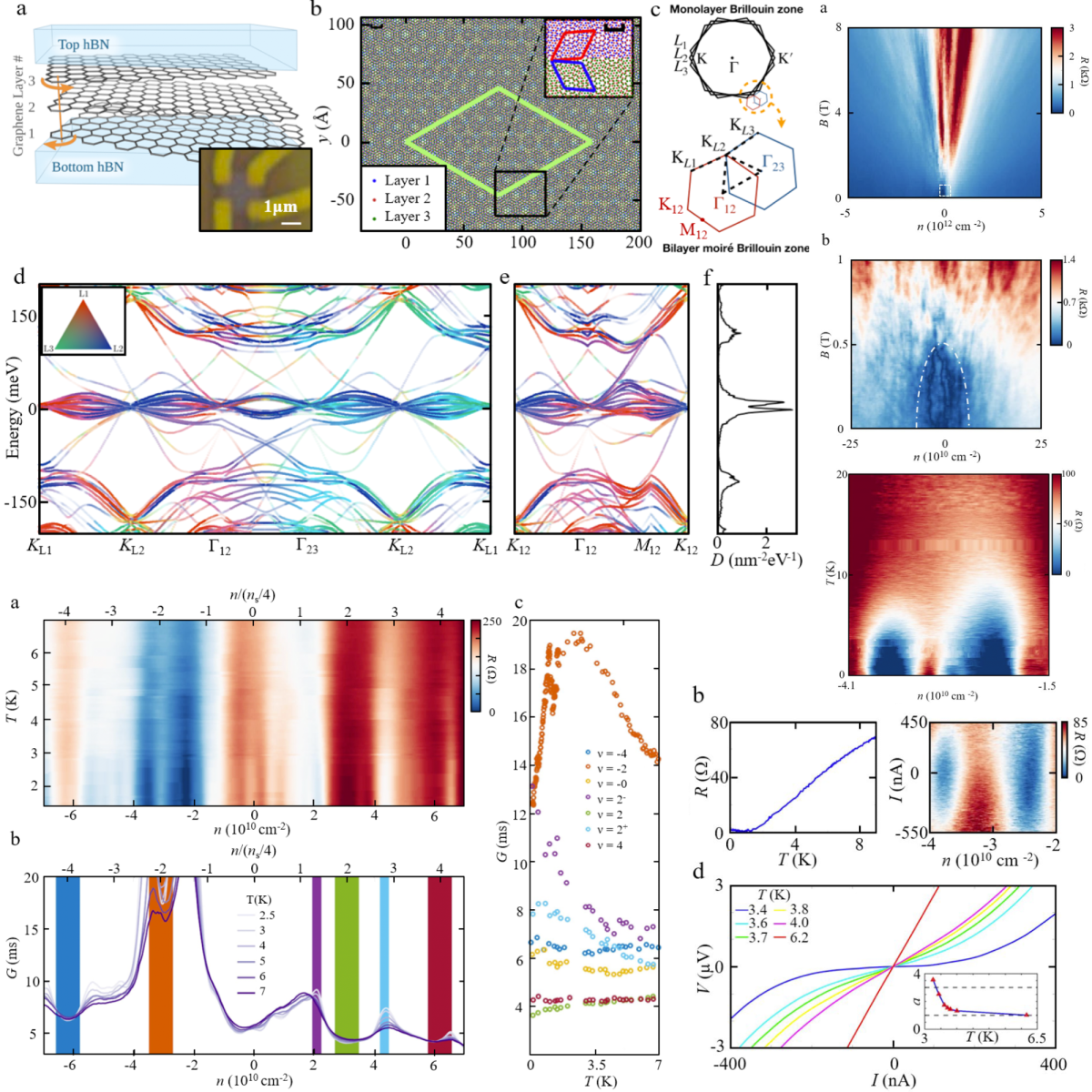Twistronics
Recent experimental results in twisted bilayer graphene (tBLG) have shown that careful control of the twist-angle between layers can give rise to flat bands with extremely narrow bandwidth because of moire band formation. In these moire flat bands, Coulomb interaction between electrons becomes significant leading to correlated electronic phases including Mott insulators and superconductors in graphene. This discovery has led to a great amount of activity in the condensed matter community on twisted bilayer structures. Beyond this model system, we investigate twisted multi-layer systems with different homo and hetero material combinations, searching for novel superconductivity with unusual properties, such as gate tunable transition temperature and non-conventional pairing symmetries. We will also build novel superconducting devices based on the twisted vdW junctions and investigate their applications in quantum sensing and quantum electronics.
Twisted Trilayer Graphene

Layers of two-dimensional materials stacked with small twist-angle give rise to beating periodic patterns on a scale much larger than the original lattice referred to as a “moiré superlattice”. When the stacking involves more than two layers with independent twist angles between adjacent layers it generates “moiré of moiré” superlattices, with multiple length scales that control the system’s behavior. Here, we demonstrate these effects of a high-order moiré superlattice in twisted trilayer graphene with the twist angles chosen to be equal, at ~ 3.06°. We report superconducting and correlated insulating states near the half filling of the moiré of moiré superlattice at a carrier density (~ 10^10 cm-2) significantly lower than any previously-reported superconductor. Moreover, the temperature dependence of the measured resistances at full-occupancy (ν = -4 and ν = 4) states are semi-metallic, distinct from the insulating behavior of the twisted bilayer systems, providing the first demonstration of emergent superconductivity from single-particle states that correspond to continuous, non-isolated flat-bands. Compared to twisted bilayer graphene (tBLG), we find robust superconductivity with Tc ~ 3.4 K despite the extremely low carrier density. Our findings imply that phonons may play a bigger role than flat bands and singular density of states in bringing about the correlated behavior.
Xi Zhang*, Kan-Ting Tsai*, Ziyan Zhu, Wei Ren, Yujie Luo, Stephen Carr, Mitchell Luskin, Efthimios Kaxiras, Ke Wang
Phys. Rev. Lett. 127, 166802